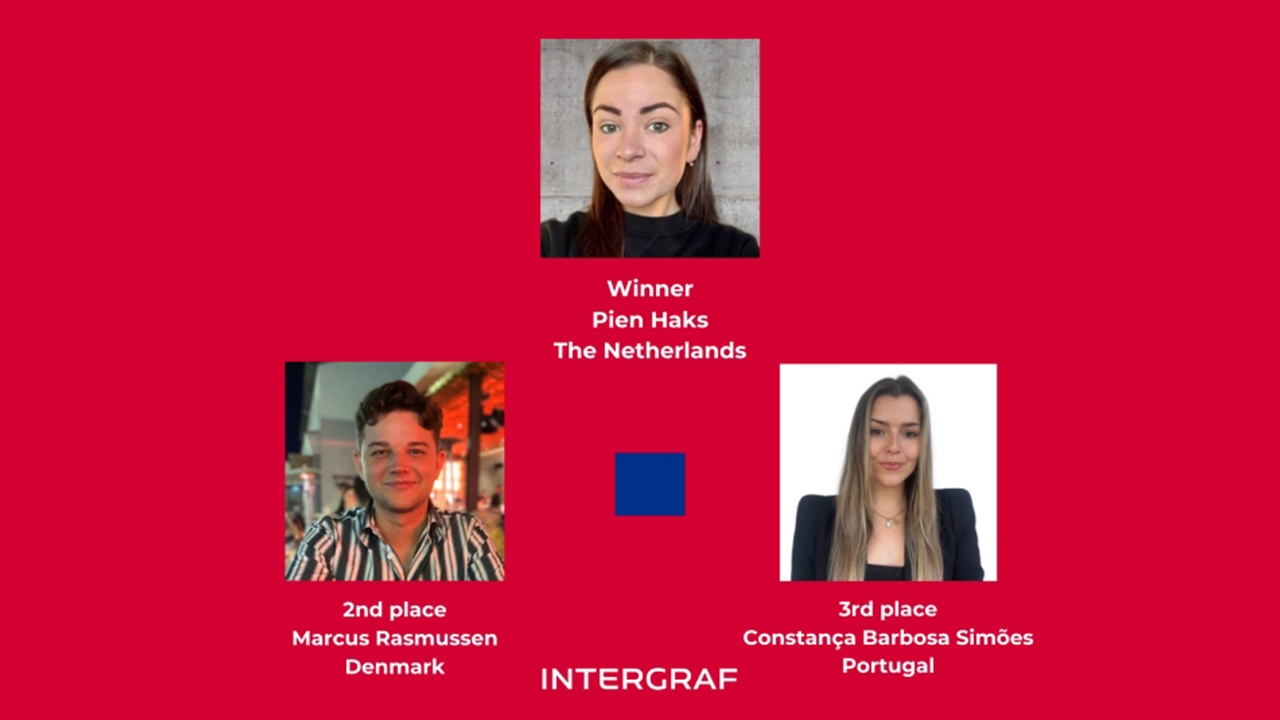Intergraf names winners of Young Talent Award 2024
This year's focus was on Artificial intelligence and how it will affect the print industry with its associated risks and opportunities.

Intergraf, a trade association promoting and protecting the interests of the graphic industry in Europe, has revealed the winner and runners-up of the Intergraf Young Talent Award 2024, its annual celebration of the pioneering ideas of young people in print.
The winning first place was awarded to Pien Haks from the Netherlands, Marcus Rasmussen from Denmark won second place, and Constança Barbosa Simões from Portugal won third place.
‘As the print industry continues to evolve, it is essential to listen to the expectations of young people and foster their ideas. At Intergraf, we are dedicated to encouraging innovative thinking and ensuring that print remains attractive to future generations,’ said the association in a statement.
The Intergraf Young Talent Award was established in 2017 to provide a platform for the voices of the next generation of print professionals. Each year, a panel of experts selects the top three submissions that showcase innovative ideas and creativity.
This year's focus was on Artificial intelligence. Candidates were invited to respond to the following question: How might artificial intelligence affect the print industry, and what are the associated risks and opportunities?
The first-place winner of Intergraf's Young Talent Award 2024, Pien Haks pointed out: ‘AI will continue to transform the graphic sector, driven by efficiency and cost savings. Administrative and creative professions will be the first to experience AI integration, automating tasks.
‘The impact on production will initially be limited, depending on companies’ readiness to upgrade machines, although newer models may incorporate AI functionalities. The most significant changes are currently occurring in content creation, where imagination is the only limit. However, it's important to note that AI serves as a tool, with ethics originating from humans. European regulations play a crucial role in managing potential excesses.’
This year’s second-place winner, Marcus Rasmussen, highlighted the transformative potential of AI applications across various aspects of the graphic industry in his submission. He emphasized AI's benefits for operational efficiency, supply chain optimization, and user interaction while acknowledging challenges like initial costs, technology dependence, data security, and obsolescence risk. He advocated for strategic planning and adaptation to capitalize on AI's benefits while mitigating risks.
The winner of third place, Constança Barbosa Simões, underscored: ‘AI will never be independent in the graphic industry. Graphic arts are a form of art that requires intuition and human essence. AI is limited as it is created by human beings. AI innovation stops when human innovation ceases. The future depends on balancing AI with human intelligence, not struggling to see which is better, but bringing them together to make the print industry stronger.’
Pien Haks will present her winning ideas at the Print Matters 2024 conference in June, in Bucharest, Romania.
Stay up to date
Subscribe to the free Label News newsletter and receive the latest content every week. We'll never share your email address.

